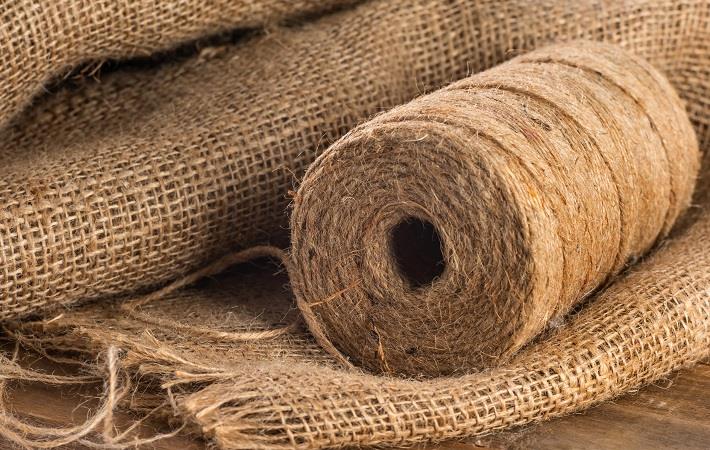The global trade value of yarn of jute and other bast fibres has shown a sharp decline in the recent years. The total trade slashed by 6.07 per cent in 2019 over the previous year, according to data from TexPro. The global trade of yarn of jute and other bast fibres was $509.00 million in 2017, which came down to $479.88 million in 2019.
The global trade value of yarn of jute and other bast fibres has shown a sharp decline in the recent years. The total trade slashed by 6.07 per cent in 2019 over the previous year, according to data from TexPro. The global trade of yarn of jute and other bast fibres was $509.00 million in 2017, which came down to $479.88 million in 2019. #
The global trade value of yarn of jute and other bast fibres has shown a sharp decline in the recent years. The total trade slashed by 6.07 per cent in 2019 over the previous year, according to data from TexPro. The global trade of yarn of jute and other bast fibres was $509.00 million in 2017, which came down to $479.88 million in 2019. #
The global export of yarn of jute and other bast fibres was $290.83 million in 2017, which lowered by 9.55 per cent to $263.05 million in 2019. Total exports decreased by 9.93 per cent in 2019 over the previous year and is expected to reach $226.27 million in 2022 with a down of 13.98 per cent from 2019.
The global trade value of yarn of jute and other bast fibres has shown a sharp decline in the recent years. The total trade slashed by 6.07 per cent in 2019 over the previous year, according to data from TexPro. The global trade of yarn of jute and other bast fibres was $509.00 million in 2017, which came down to $479.88 million in 2019. #
The global import of yarn of jute and other bast fibres was $218.18 million in 2017, which curbed by 0.61 per cent to $216.83 million in 2019. Total imports crushed by 0.91 per cent in 2019 over the previous year and is expected to cut by 0.92 per cent to $214.84 million in 2022 from 2019.
The global trade value of yarn of jute and other bast fibres has shown a sharp decline in the recent years. The total trade slashed by 6.07 per cent in 2019 over the previous year, according to data from TexPro. The global trade of yarn of jute and other bast fibres was $509.00 million in 2017, which came down to $479.88 million in 2019. #
UK ($38.05 million), France ($29.28 million), Turkey ($25.38 million), China ($25.34 million), US ($21.57 million) and Italy ($21.57 million) were the key exporters of yarn of jute and other bast fibres across the globe in 2019, together comprising 61.28 per cent of total export. These were followed by Canada ($14.67 million), Germany ($12.48 million) and Denmark ($11.14 million).
The global trade value of yarn of jute and other bast fibres has shown a sharp decline in the recent years. The total trade slashed by 6.07 per cent in 2019 over the previous year, according to data from TexPro. The global trade of yarn of jute and other bast fibres was $509.00 million in 2017, which came down to $479.88 million in 2019. #
From 2014 to 2019, the most notable rate of growth in terms of export, amongst the main exporting countries, was attained by US (124.61 per cent), Turkey (109.36 per cent) and UK (40.42 per cent).
The global trade value of yarn of jute and other bast fibres has shown a sharp decline in the recent years. The total trade slashed by 6.07 per cent in 2019 over the previous year, according to data from TexPro. The global trade of yarn of jute and other bast fibres was $509.00 million in 2017, which came down to $479.88 million in 2019. #
US ($40.05 million), Germany ($17.58 million), Netherlands ($15.36 million), China ($13.45 million) and UK ($12.93 million) were the key importers of yarn of jute and other bast fibres across the globe in 2019, together comprising 45.83 per cent of total import. These were distantly followed by Guatemala ($9.78 million), Indonesia ($9.26 million), Spain ($7.93 million) and France ($6.69 million).
The global trade value of yarn of jute and other bast fibres has shown a sharp decline in the recent years. The total trade slashed by 6.07 per cent in 2019 over the previous year, according to data from TexPro. The global trade of yarn of jute and other bast fibres was $509.00 million in 2017, which came down to $479.88 million in 2019. #
From 2014 to 2019, the most notable rate of growth in terms of import, amongst the main importing countries, was attained by China (1376.69 per cent) and Netherlands (607.66 per cent).
Fibre2Fashion News Desk (JL)
